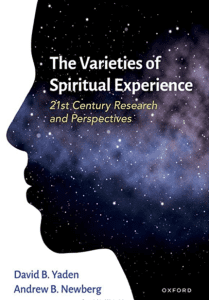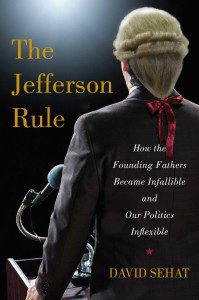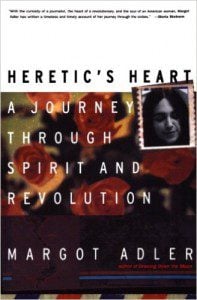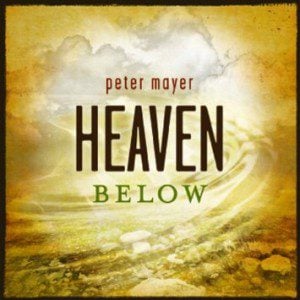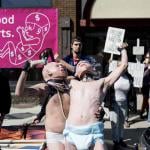Unitarian Universalists may not believe, with Henry Ford, that history is bunk, but many
probably do believe that history is for historians — not a matter of concern for the average member of a local congregations. We tend to ignore the warning of George Santayana that those who forget their history may be condemned to repeat it, or the admonition of Rebecca Parker (president of the Starr King School for the Ministry, our West Coast seminary), that there is a shallowness that comes from each generation defining itself, assuming it can ignore whatever came before. Putting it positively, Alice Walker said “To acknowledge our ancestors means we are aware that we did not make ourselves.”
—Warren R. Ross, The Premise and the Promise: The Story of the Unitarian Universalist Association, xiii
I spent a week recently braving the wintry climes of Chicago to take a weeklong crash course in Unitarian Universalist history. I’m not sure I fully appreciated in advance that I had signed-up to spend five days straight from 9:00 a.m. to 5:00 p.m. sitting through history lectures. That’s a full forty-hour work week of all history, all the time! Fortunately, though, the professor was engaging, my classmates were smart and interesting, and there were presentations and discussions to balance out the lectures.
This class is one task in a long list of requirements necessary for me to come into fellowship with the Unitarian Universalist Association. When I was sharing this list of requirements with one of my friends, his response was, “I didn’t know you had to work so hard to hang a question mark around your neck!” What he meant is that Unitarian Universalism is famously comfortable with diversity, ambiguity, and pluralism. As the joke goes, “Where there are three UUs, there are at least 8 opinions.” And as a whole we UUs can be better sometimes at asking the hard questions than we are at reaching any definitive answers.
As I’ve reflected on my friend’s good-natured joke, my considered response is that all the hard work and time required to be a Unitarian Universalist minister is precisely what may be necessary to responsibly hang that metaphorical question mark around your neck. I love being part of a congregation that includes atheists and Christians, Buddhists and Humanists, Jews and Pagans — all under the big tent of Unitarian Universalism. But negotiating that robust religious pluralism is a delicate dance. And I am grateful for the opportunity I had this past week to study in depth how our UU forbears negotiated diversity and conflict in their day.
As I’ve heard various of my colleagues say, “Unitarian Universalism is not an interfaith organization.” We draw from many different sources, but at our best, Unitarian Universalism is more than the sum of its parts. And I’m even more convinced after this past week that it really matters what stories we choose to tell from our history, and that our stories really matter. We are inheritors of a tremendous legacy of women and men, who blazed the path we now walk. One of the people to whom we are indebted for helping us tell our history is Earl Morse Wilbur, who in the mid-twentieth century published a two-volume History of Unitarianism, which weighs in a more than 1,000 pages. One sometimes unappreciated part of his feat is that to write this history required reading primary source material not only “in Latin and in the more familiar languages of western Europe,” but also “Polish and Hungarian.” (As one of many anecdotes of why languages such as Polish and Hungarian came to be vital to Unitarianism, history’s first and only Unitarian King, John Sigismund of Transylvania, passed a landmark “Act of Religious Tolerance and Freedom of Conscience” in 1568 known as the “Edict of Torda.”) However, to return to broad sweep of Earl Wilbur’s massive historical survey, Wilbur notes three recurring trends in the Unitarian half of our history: “freedom of religious thought, the unrestricted use of reason, and tolerance of difference views and practices.” Wilbur’s three phrases could be distilled to the values of freedom, reason, and tolerance.
Indeed, the Liberal Turn in Religion can be seen as the move from authority vested in hierarchy, community, and tradition to authority derived from reason and individual experience. And that’s a large part of our inheritance: predecessors who were willing to question entrenched (and often unjust) hierarchies, the ways that a community can become a tyranny of the majority, and how traditions can prevent progress. So that question mark that others can perceive us as wearing around our neck is well-earned. Many Unitarians and Universalists were persecuted or killed for the right to ask hard questions.
At the same time, I don’t think the old joke is fair that asks, “What do you get when you cross an evangelist with a Unitarian Universalist? Someone who walks around knocking on doors for no particular reason.” First of all, Wilbur’s three values point out whom we have been historically as Unitarian Universalists. And, in contrast, individuals and groups who do not value freedom, reason, and tolerance, may well feel displaced within our movement, despite how large the UU big tent can be. As Rebecca Ann Parker, the president of Starr King School for the Minister in Berkeley, California (one of the three main seminaries for UUism) has pointed out, “there are some theological options that are outside the pale” even of the broadly inclusive Unitarian Universalism.
We have room for many different understanding God as well as for many people who don’t believe in God, but you can’t be a Unitarian Universalist and “hold the view that God is the all-powerful determiner of everything that happens.” Such a view would violate the cherished UU value of human freedom and responsibility.
Second, you can believe many different perspectives about the afterlife or that there is no afterlife and find a comfortable place for yourself within UUism, but you cannot believe that there will be an eternal “separation of the saved from the damned in which the good are rewarded with eternal bliss and the damned are punished with eternal suffering.” Such a view would violate our First Principle that “All people have inherent worth and dignity.” Even more problematically, it would violate the Universalist half of our heritage, which holds that whatever we mean by salvation “is universal” and not limited to some elite group.
Third, many UUs are understandably more drawn to one or more of our Six Sources for a variety of reasons related to personal proclivities and background, but you can’t be a Unitarian Universalist and believe in “one religion that encompasses the exclusive, final truth for all times and places.” Historically there were hard-fought battles in our tradition particularly with some individuals and groups who wanted to keep the Christian tradition more central or elevated in our congregations, but the decisive shift was eventually toward a robust religious pluralism that explicitly includes the Jewish and Christian tradition, but only as one among many equally legitimate sources for truth and meaning.
Fourth, you can believe many different views about this world and even about the next world, but “you cannot hold the view that salvation is to be found solely beyond this world.” There is a long-standing tradition in Unitarian Universalism in valuing this world and this life — here and now.
Importantly, what I have been describing is by no means a creed. In each case that I’ve been exploring, the starting point is the wide, expansive number of positions that one can comfortably hold within Unitarian Universalism. And as a rule, I’m generally more in favor of emphasizing the large swath of beliefs and practices that our tradition includes. But there are lessons from our history about what our predecessors have found as incompatible with values like core values like freedom, reason, and tolerance.
And speaking of our historical tradition, one of the stereotypes of Unitarian Universalism is that our young people (and perhaps our adults members as well) often know more about Buddhism, for example, than they do about Unitarian Universalism. Some of the statistics I’ve seen are that “85-90% of UUs today were not raised as such.” The stereotype is that, “[O]ur children may share our ideals in the abstract, but feel no loyalty to the institution that gives them viability….” Fortunately, efforts are being made in our Religious Education curriculum to emphasize UU history and practice. But we continue to be better at individualism than institutional loyalty, even to the institution of Unitarian Universalism.
For example, if you think of a famous Unitarian from the 19th-century, Ralph Waldo Emerson may be one of the first names to come to mind. But another vitally important name virtually unknown today is a man named Henry Bellows, who in 1865 was the prime mover behind the founding of the National Conference of Unitarian Churches. As you may remember, Emerson stopped being a Unitarian minister. He walked away from his pulpit to join the lecture circuit. Bellows is arguably much more a reason that modern Unitarianism exists than Emerson because Bellows did the hard work of organization building in the mid-19th century.
Again, the stories that we tell matter. Why are we always telling the story of Emersonian individualism, but never the story of “Bellowsian institutionalism”? If we value the principles and sources of Unitarian Universalism and want them to be available for future generations, then we need to look beyond our local congregations to the past, present, and future of the broader Unitarian Universalist movement. And part of how we can do that is by learning from the successes and failure in our history.
For this post, because, I doubt any of you want to be here for a forty-hour transcript of my recent UU history marathon in blog form, I’ll limit myself to sharing a few highlights from UU history. And I’ll continue to weave pieces of UU history into future posts.
In telling the story of the two historical streams — proto-Unitarianism and proto-Universalism — that followed intersecting paths, became formalized movements, and eventually consolidated in 1961 to become Unitarian Universalism, I could rewind the clock all the way back to early Christian history: to the battles of early church leaders like Arius (250 or 256–336) and Athanasius in the 4th century to define the nature and character of Jesus in relationship to God. Although Arius had a significantly high view of Jesus’ relationship to God, Arius’ willingness to stand up against the camp that eventually established the orthodox view of the Christian Trinity helped establish Arius and his supporters as laying the groundwork for future Unitarians that would reject the Trinity. From the Universalist side, we could similarly look to early Christian leaders such as Origen of Alexandria (184/185 – 253/254), who early in the third century was speculating about Universalist themes: that ultimately God’s love would save everyone.
Next, I’ll fast forward more than a thousand years from some of these early proto-Unitarians and proto-Universalists to the Reformation period and the life of Michael Servetus. Many of you will recall that the printing press was invented in 1455 by Johann Gutenberg, and as it became increasingly possible to study the Bible for yourself (instead of just trusting what the religious authorities told you the Bible said), Michael Servetus was stunned to discover in his own studies that that there was no mention of the Trinity in the Bible. He was particularly disturbed by this discovery because he knew of people, who had been discriminated against, tortured, or killed for not believing in the Trinity.
Admittedly, as you study Servetus’ life in depth, he does have an arrogant streak. But there is also a sense in which it seems he genuinely thought that his 1531 book On the Errors of the Trinity was not only correcting a misperception about the Bible, but also that people would widely be convinced by his argument. The unfortunate reality is that many religious authorities, both Catholic and Protestant, perceived Servetus’ proto-Unitarian arguments to be an infection or poisonous threat to Christianity, as they understood it. Accordingly, Servetus changed his name, went into hiding, and enrolled in medical school. And during this period actually published a landmark finding about pulmonary circulation. But to cut to the tragic end of Servetus’ fascinating life story, Servetus was eventually found, tried, and executed in John Calvin’s Geneva for the crimes of anti-Trinitarianism and anti-paedobaptism. From Calvin’s perspective, sacrificing Servetus was a necessary to defend God’s honor: “the majesty of God, the salvation of souls, and the stability of Christendom were at stake.” But Servetus’ life, published works, and tragic martyrdom helped embolden others to question the entrenched religious authorities and to show that increased religious tolerance was desperately needed.
One of the most powerful examples of someone influenced by Servetus’ martyrdom is Sebastian Castellio, who although not necessarily in agreement with Servetus’ theology, nonetheless rose fiercely to condemn Servetus’ wrongful death, writing, “to kill a man is not to protect a doctrine; it is but to kill a man.” Today, Servetus’ story reminds us of how hard fought and vital it is protect each individual’s right to the free and responsible search for truth and meaningful.
At the same time, in talking about all the trouble that early Unitarians and Universalists got into for rejecting the Trinity and rejecting to idea of eternal torment in hell, it’s important also to emphasize how much more complicated the two movements were as well as that they both became about much more than rejecting some tenet of Christian orthodoxy. Perhaps one of the most important trends — that eventually helped lay the groundwork for the 1961 consolidation of American Unitarian Association and the Universalist Church of America — was that both Unitarianism and Universalism began to emphasize hope for social change in this world. The Transcendentalist movement in Unitarianism encouraged it adherents to find religious meaning and experience in all aspects of this world. Think of Emerson’s essay “Nature” or Thoreau’s essay “Walking.” Universalists, likewise, began to emphasize not only universal salvation in the next world, but universal salvation in this world: “the universal community of all men and women and the necessity of working toward the secular realization of that community through peace and justice on earth.”
To also name one of the stumbling blocks that kept the Unitarians and the Universalists apart before the 1961 consolidation, the Unitarians tended to come from the upper class and the Universalists from the lower class. One classic joke about this this economic divide from a nineteenth century minster, Thomas Starr King (1824-1864), who served in both Unitarian and Universalists settings was that “[Universalists] think God is too good to damn them forever, [Unitarians] think they are too good to be damned forever.”
There’s so much more I’d like to say about the women in Unitarian Universalist history such as Margaret Fuller’s significant influence on Transcendentalism or the whole of Olympia Brown’s fascinating and inspiring life. She lived from 1835-1926, and helped put significant cracks in what many female ministers call “the stained glass ceiling.” In 1861, Olympia Brown forced her way into the halls of a male-only theological seminary through the sheer force of her will, and became “the first woman to achieve full ministerial standing recognized by a denomination.” But both Brown and Fuller deserve posts of their own at a future date, as do the fascinating histories around the Humanist Controversy in Unitarian Universalism, the Black Empowerment Controversy, and so many other fascinating figures and groups that have shaped our movement.
As a note in closing, as I’ve been working my way through the required reading list for the Ministerial Fellowship Committee, the credentialing body of the Unitarian Universalist Association, I’ve been struck by the relatively small number of sermons that are required reading to become a Unitarian Universalist minister. Among the required sermons are William Ellery Channing’s 1819 sermon “Unitarian Christianity” (which gave many ministers permission to speak aloud about liberal positions they had previously held only silently) and his 1828 sermon “Likeness to God” (which had a positive view of human nature, in contrast to the Calvinistic view of human nature as “total depravity”) as well as Theodore Parkers 1841 sermon “The Transient and the Permanent in Christianity.” Perhaps if the doors were opened much beyond these historic sermons, then too many egos would get wounded about whose sermons were included and excluded from the required list. But I did begin to reflect on what it might look like to preach a sermon in the early twenty-first century that would become required reading for all future Unitarian Universalist ministers. I don’t have the answer to that yet, but I’ll let you know if I come up with a sermon that historically significant. However, perhaps the larger point is that studying UU history not only helps us avoid an unintentional and harmful repetition of our history, but also challenges us to make a difference in the world that makes history for future generations.
For now, though, I would like to invite you to re-experience a piece of Unitarian Universalist history. In 1960 the Unitarians and the Universalists came together separately in Boston and each group voted overwhelmingly for consolidation. The delegates present on that historic occasion said that the “emotional climax” came as the two groups joined together after the vote for worship. As they collectively streamed into the sanctuary as an new uniting body, they sang the processional hymn, “As Tranquil Streams.” They sang this hymn over and over until everyone was joined together in the same room.
As with so many moments in history, the vote could have been otherwise. But in this case, years of work and hope resulted in inclusivity and unity. Our Sixth Principles holds up the lofty goal of “world community with peace, liberty, and justice for all,” but history shows us how difficult it was even for two liberal denominations, with much in common, to merge. But we have to start somewhere. I invite you to take a few moment to savor the lyrics of this historic hymn that recalls a bold step forward for unity. In so doing, may we all be inspired in our ongoing hope and work for greater peace, liberty, and justice for all:
As tranquil streams that meet and merge and flow as one to seek the sea,
Our kindred hearts and minds unite to build a church that shall be free.
Free from the bonds that bind the mind to narrow thought and lifeless creed;
Free from a social code that fails to serve the cause of human need:
A freedom that reveres the past, but trusts the dawning future more;
And bids the soul, in search of truth, adventure boldly and explore.
Prophetic church, the future waits your liberating ministry;
Go forward in the power of love, proclaim the truth that makes us free.
Notes
1 For more notes from my UU history reading journal, see my blog post on “A Whirlwind Tour of Liberal Religious History: Compilation,” available at http://www.patheos.com/blogs/carlgregg/2013/01/a-whirlwind-tour-of-liberal-religious-history-compilation.
2 Earl Morse Wilbur’s two-volumes of Unitarian history were published in 1945 and 1952, and total 1,135 pages. This work is the “first comprehensive study of the Unitarian movement” and “remain[s] the basic work in the field,” according to Charles Howe, who has written a 200-page distillment of Wilbur’s tome titled For Faith and Freedom: A Short History of Unitarianism in Europe (xi).
3 three recurring trends in the Unitarian half of our history — see Howe, Faith and Freedom, 185.
4 “there are some theological options that are outside the pale” — the next four points are drawn from Rebecca Ann Parker, “Keep the Circle Whole: The Challenge of Unitarian Universalist Theology,” available at http://www.sksm.edu/research/sermons/unitariantheol.pdf.
5 “85-90% of UUs today were not raised as such” — see Warren R. Ross, The Premise and the Promise: The Story of the Unitarian Universalist Association, 137-139.
6 I owe the point contrasting Emersonian individualism and Bellowsian institutionalism to Conrad Wright, Walking Together: Polity and Participation in Unitarian Universalist Churches, 43, 69, 126.
7 For more on Servetus, see Roland Herbert Bainton, Hunted Heretic: The Life and Death of Michael Servetus, 1511-1553.
8 Specifically on the Calvin quote, see Bainton, 142.
9 “the universal community” — David Robinson, The Unitarians and the Universalists, 6.
10 Thomas Starr King quote — Ernest Cassara, Universalism in America: A Documentary History of a Liberal Faith, 6.
11 On Margaret Fuller, see Megan Marshall, Margaret Fuller: A New American Life. On Olympia Brown, see Charlotte Cote, Olympia Brown: The Battle for Equality. Relatedly, see Cynthia Grant Tucker, Prophetic Sisterhood: Liberal Women Ministers of the Frontier, 1880-1930.
12 “As Tranquil Streams” — Ross, 23.
Related Posts
A Whirlwind Tour of Liberal Religious History: Compilation
The Rev. Dr. Carl Gregg is a trained spiritual director, a D.Min. graduate of San Francisco Theological Seminary, and the minister of the Unitarian Universalist Congregation of Frederick, Maryland. Follow him on Facebook (facebook.com/carlgregg) and Twitter (@carlgregg).
Learn more about Unitarian Universalism:
http://www.uua.org/beliefs/principles/index.shtml



